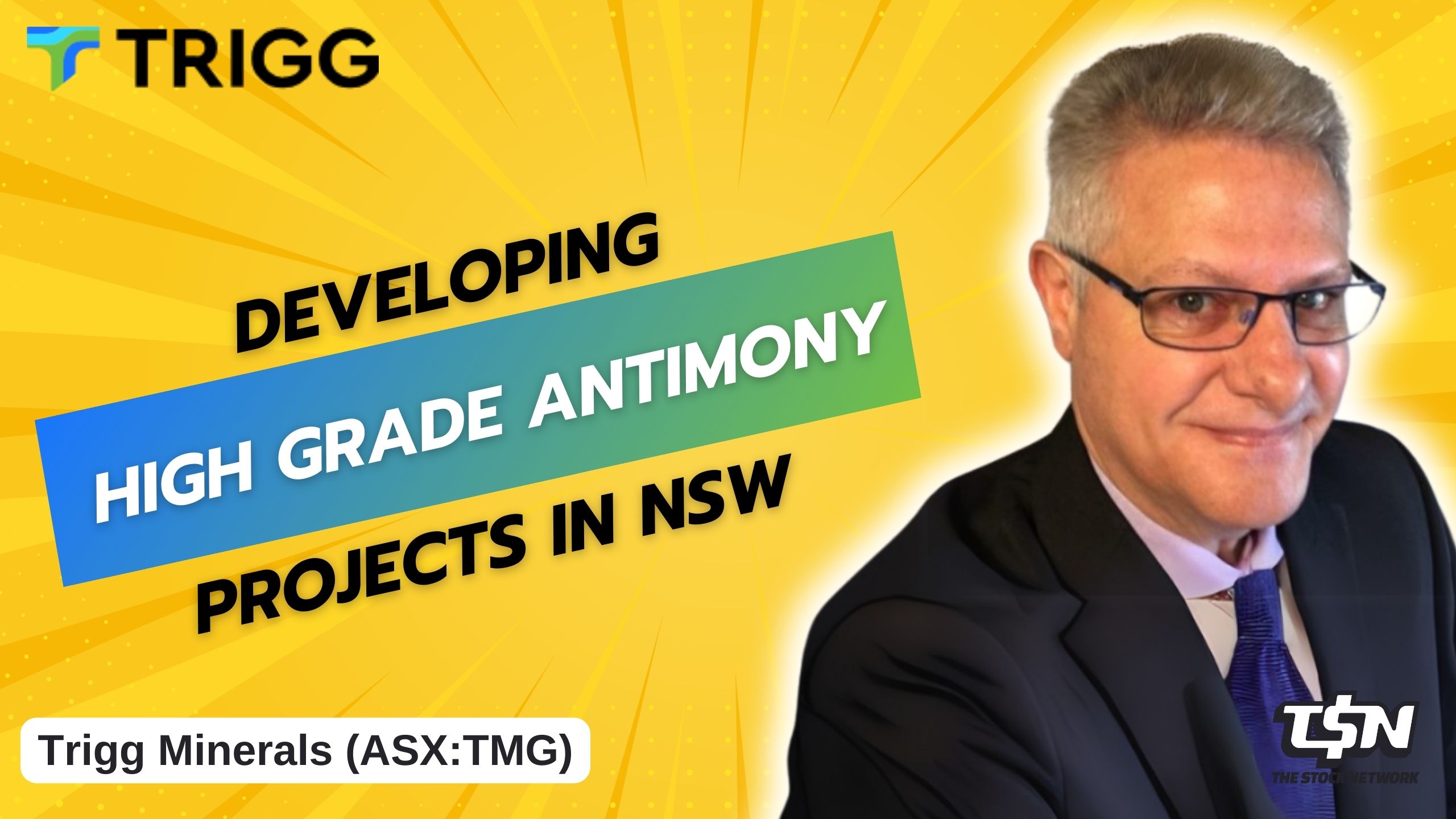Transcription of The Stock Network Interview with Trigg Minerals (ASX:TMG) Managing Director, Andre Boyzon
Lel Smits: Trigg Minerals is a mineral exploration business focused on advancing its portfolio of high-grade antimony projects in New South Wales, including its wholly-owned Achilles project known as Wild Cattle Creek. Joining me today from Trigg Minerals is its Managing Director, Andre Boyzon. Andre, welcome to the Stock Network.
Andre Boyzon: Thanks, Lel. Good to be here.
Lel Smits: Now, firstly, can you start by telling us about the importance of antimony in the modern-day global economy?
Andre Boyzon: Well, I don’t know if you know what antimony is, but most people don’t, so I’ll just quickly tell you what that is. Antimony is just a, it’s a metalloid, and it’s got some critical applications. It’s a critical mineral. Critical applications, probably the most common ones, are used as a hardener with lead and other metals.
Applications for that is in batteries, military applications like bullets, missiles, artillery shells. Then also as a trioxide, it’s a white powder, and it’s impregnated into things like plastics and furnishings, et cetera, as a fire retardant. And third, probably the fastest-growing application for antimony is sodium intimidate, which is impregnated into the glass of solar panels to give it more clarity.
So that’s the uses of antimony, and there’s a worldwide shortage. There’s probably been a shortage for the last two or three years, and I think it’s just going to get worse, especially with the Chinese stopping exports of antimony.
Lel Smits: Now, Andre, you’ve already defined a high-grade antimony resource at Wild Cattle Creek. Just how large is the deposit, and can you talk us through if you see any potential upside through further exploration?
Andre Boyzon: Okay. So the deposit at the moment, the MRE on that at the moment is one and a half million tons at close to 2% grade, and that gives us about 30,000 tons of contained antimony metal. The previous guys that were on the property many years ago sort of stopped drilling, they had some company issues, and we realised that it’s actually open for more drilling, and we have a drill plan in place to drill underneath the current MRE.
That’s at depth. We also know that it’s open along strike. It occurs along the Bealsdown Fault, and the Bealsdown Fault runs about six kilometres, so we think there’s a great continuation along strike, and also along down dip.
So we have a drill plan in place, and we think we could quite easily triple the size of the resource to about 100,000 tons of contained metal and contained antimony metal.
Lel Smits: I noticed you recently expanded your portfolio of antimony and gold projects in New South Wales. What’s the strategic rationale for acquiring these new tenements?
Andre Boyzon: Well, we acquired those really as part of our strategy to really increase our footprint, and exploration tenements, really just so we can have something up our sleeve, not just Wild Cattle Creek.
When I come back to talking about the shortage of antimony worldwide, at the moment, there’s probably 20,000 to 30,000 tons of supply lacking in the world at the moment, and we think we can play a crucial part in topping up that supply as one of the suppliers in the Western world.
Lel Smits: Well, thank you so much, Andre, for the update from Trigg Minerals, and I really look forward to seeing your developments as the year progresses.
Andre Boyzon: Thanks, Lel. Thank you very much. It’s been a pleasure.
Ends
